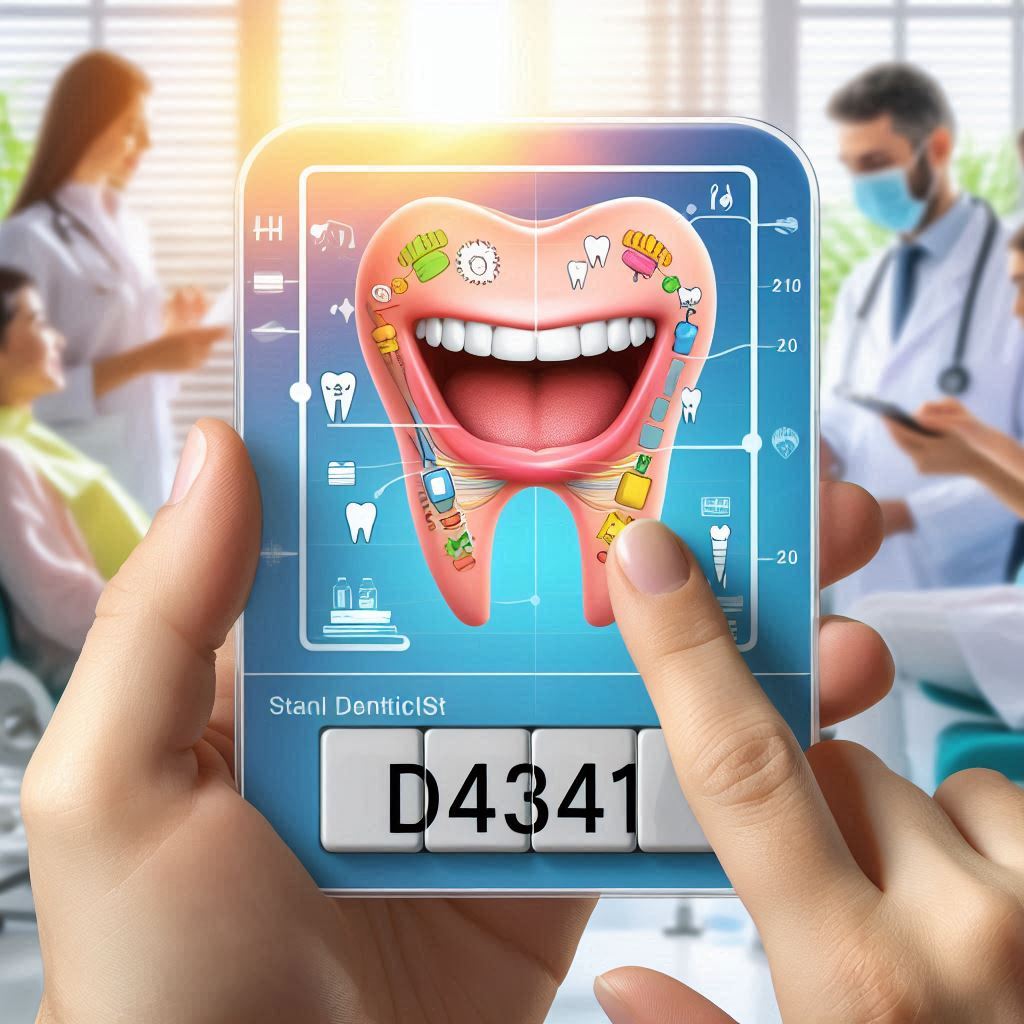Understanding Dental Code D4341
Dental Code D4341 is a procedural code used in dentistry to describe a specific type of periodontal treatment. This code falls under the category of “Periodontal Scaling and Root Planing” and is often referred to as a deep cleaning procedure. Unlike a regular dental cleaning, which focuses on the surfaces of the teeth and the gum line, D4341 targets the removal of plaque, tartar, and bacterial toxins from below the gum line.
This procedure is typically recommended for patients who show signs of periodontal disease, such as inflamed gums, bleeding, and pockets between the teeth and gums that are deeper than 4 millimeters. The goal of D4341 is to halt the progression of gum disease, prevent tooth loss, and promote healing of the gum tissue.

Dental Code D4341 Definition
Dental Code D4341 is defined by the American Dental Association (ADA) as “scaling and root planing—four or more teeth per quadrant.” This means that the procedure involves cleaning the roots of the teeth and smoothing out any rough areas to prevent bacteria from reattaching. It is performed on a quadrant-by-quadrant basis, meaning that the mouth is divided into four sections (upper right, upper left, lower right, and lower left), and each section is treated individually.
The code specifically applies to cases where four or more teeth in a single quadrant require treatment. If fewer than four teeth in a quadrant need scaling and root planing, a different code (D4342) is used.
Dental Procedure Code D4341: What Does It Entail?
The D4341 procedure is a non-surgical treatment for periodontal disease. It is typically performed by a dentist or dental hygienist and involves the following steps:
- Assessment and Diagnosis: Before the procedure, the dentist will conduct a thorough examination, including measuring pocket depths around the teeth and taking X-rays to assess bone loss.
- Anesthesia: To ensure patient comfort, local anesthesia is often administered to numb the area being treated.
- Scaling: Using specialized dental instruments, the dentist or hygienist removes plaque and tartar from the tooth surfaces, both above and below the gum line.
- Root Planing: The roots of the teeth are smoothed to eliminate rough spots where bacteria can accumulate. This step also helps the gums reattach to the teeth.
- Post-Treatment Care: After the procedure, the dentist may recommend follow-up appointments to monitor healing and ensure the success of the treatment.
Dental Code D4341 Cost: What to Expect
The cost of Dental Code D4341 can vary widely depending on factors such as geographic location, the severity of the periodontal disease, and the dentist’s experience. On average, patients can expect to pay between 200and200and400 per quadrant. Since the procedure is often performed on multiple quadrants, the total cost can range from 800to800to1,600 or more.
Table: Estimated Costs for Dental Code D4341
| Factor | Cost Range (Per Quadrant) |
|---|---|
| Geographic Location | 200−200−400 |
| Severity of Condition | 250−250−500 |
| Dentist’s Experience | 300−300−600 |
Many dental insurance plans cover a portion of the cost of D4341, especially if the procedure is deemed medically necessary. Patients are encouraged to check with their insurance provider to understand their coverage and out-of-pocket expenses.
What Does Dental Code D4341 Mean?
Dental Code D4341 is more than just a billing code; it represents a critical step in the fight against periodontal disease. For patients, understanding this code means recognizing the importance of early intervention and proper oral hygiene. For dental professionals, it signifies a commitment to providing effective, evidence-based care.
The procedure associated with D4341 is not just about cleaning teeth—it’s about preserving oral health, preventing systemic health issues linked to gum disease (such as heart disease and diabetes), and improving overall quality of life.
Conclusion
Dental Code D4341 is a vital tool in the treatment of periodontal disease. By addressing the root causes of gum inflammation and infection, this procedure helps patients maintain healthy teeth and gums for years to come. Understanding the description, definition, procedure, and cost of D4341 empowers patients to make informed decisions about their oral health.
FAQs
1. Is Dental Code D4341 painful?
While the procedure can cause some discomfort, local anesthesia is used to minimize pain. Most patients report only mild soreness afterward.
2. How long does the D4341 procedure take?
The procedure typically takes 1-2 hours per quadrant, depending on the severity of the condition.
3. Will my insurance cover D4341?
Many dental insurance plans cover D4341 if it is deemed medically necessary. Check with your provider for specific details.
4. How often is D4341 needed?
The frequency depends on the patient’s oral health. Some patients may need the procedure once, while others may require periodic treatments.
5. Can I eat after the procedure?
It’s best to wait until the anesthesia wears off before eating. Stick to soft foods for the first few days to avoid irritation.
Additional Resources
- American Dental Association (ADA): www.ada.org
- National Institute of Dental and Craniofacial Research: www.nidcr.nih.gov
- American Academy of Periodontology: www.perio.org


